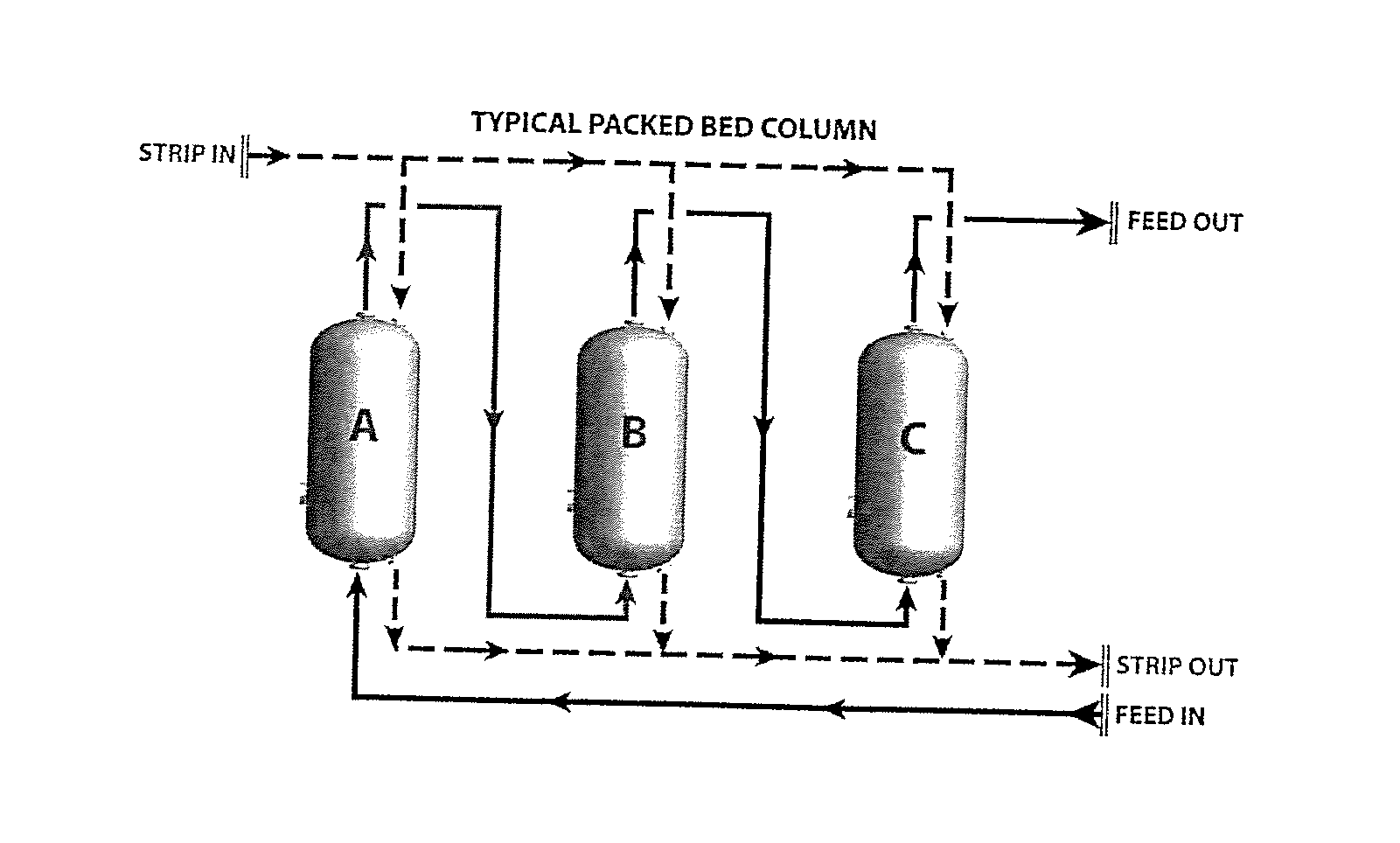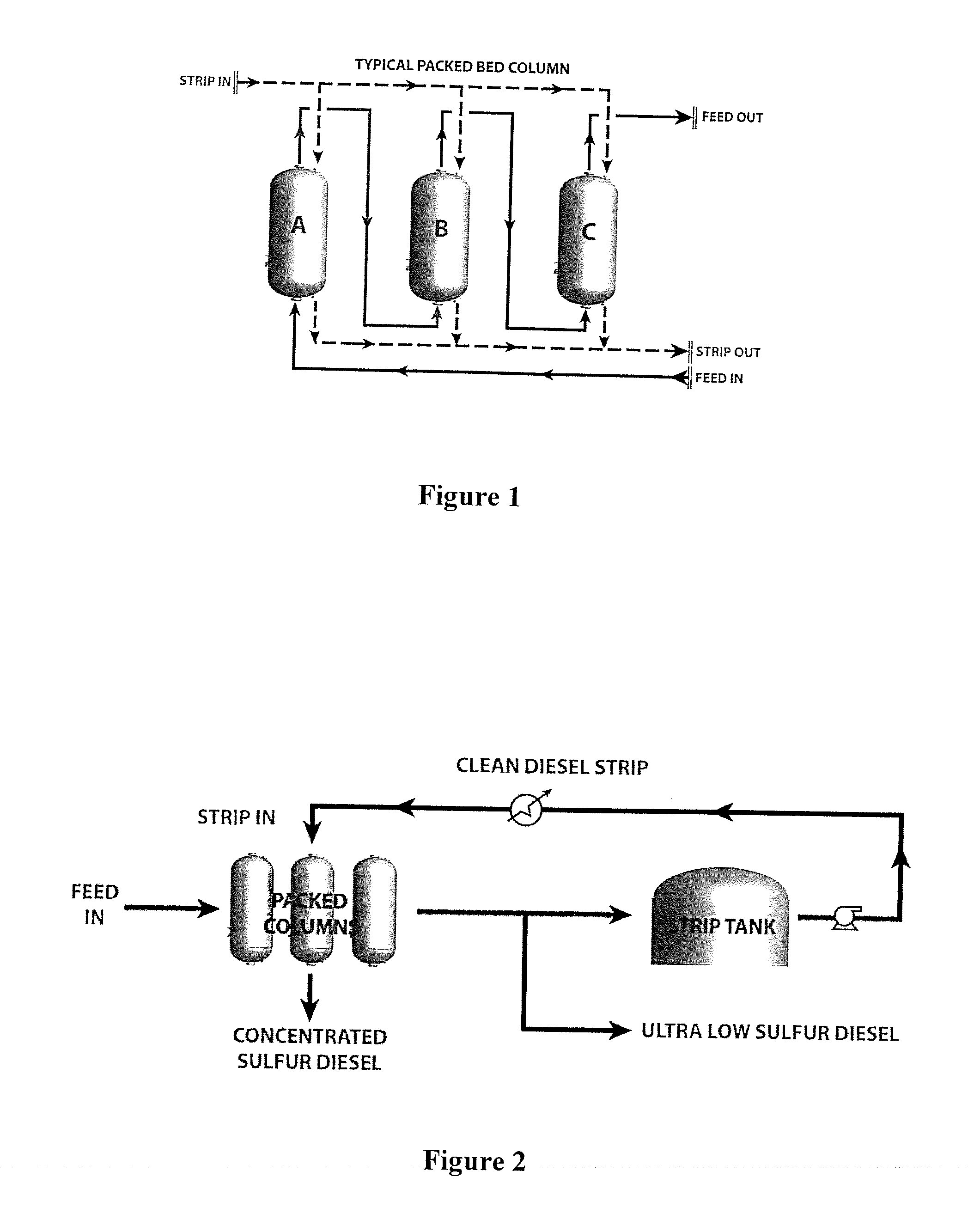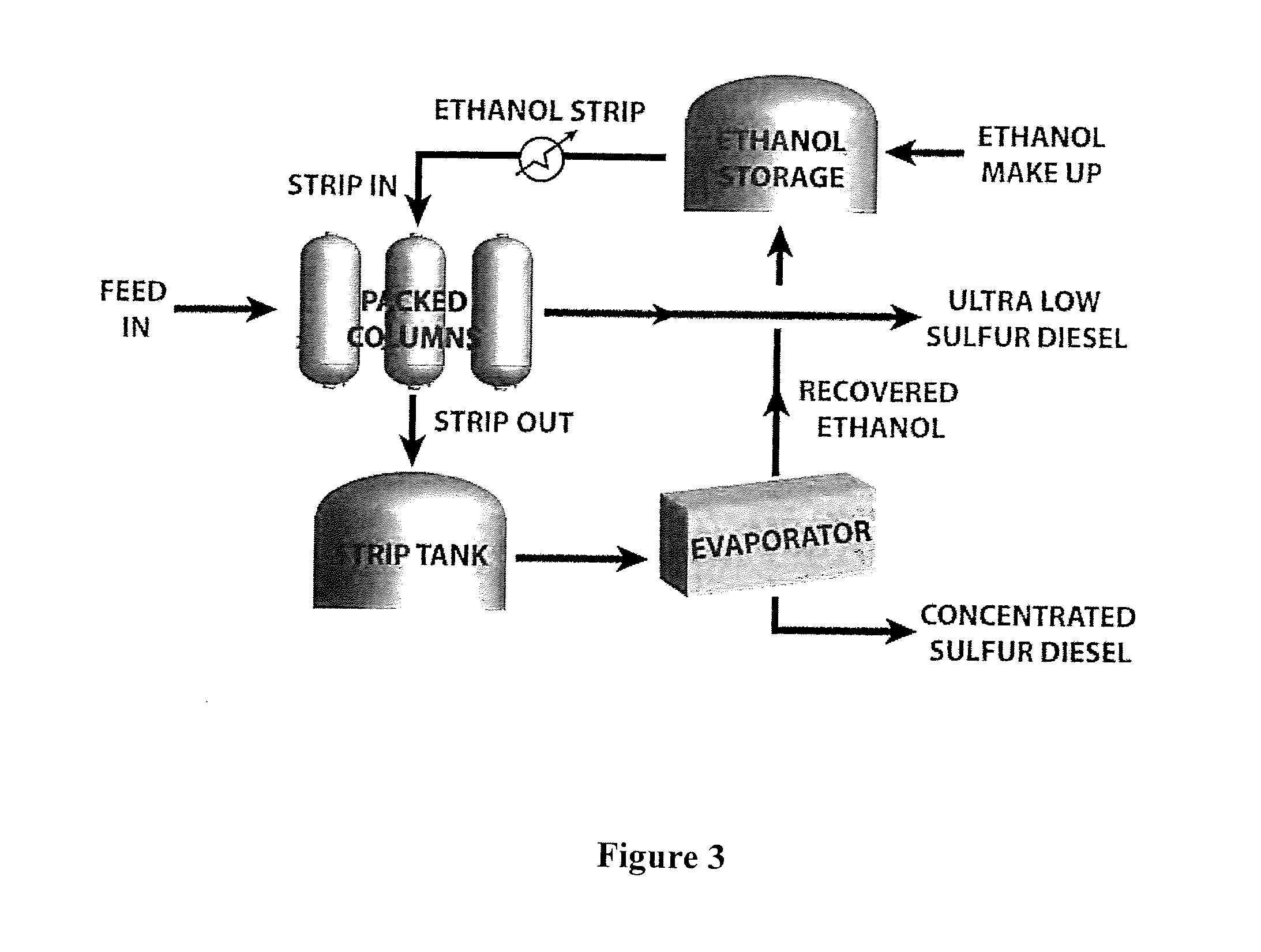Non-Oxidized Desulfurization Process and Method of Using the Same
- Summary
- Abstract
- Description
- Claims
- Application Information
AI Technical Summary
Benefits of technology
Problems solved by technology
Method used
Image
Examples
example 1
[0102]Ethanol was used in durability studies because it is harsher on the adsorbent described herein than ultra-low sulfur diesel. The adsorption capability of the adsorbent was measured to detect any adverse effects from repeated use and regeneration.
[0103]The test procedure in batch reactors was as follows:
[0104]1. Diesel and adsorbent in weight ratio of 5:1 were mixed at room temperature.
[0105]2. After reaching an equilibrium point, diesel was taken for analysis.
[0106]3. The adsorbent was washed with ethanol and dried.
[0107]4. The adsorbent was mixed again with new diesel at the same ratio as before.
[0108]5. Steps 1 through 4 were repeated 10 times.
[0109]Two sets of tests were run for two diesel compositions with different sulfur concentrations, 4900 ppm and at 300 ppm respectively. The diesels containing the recited sulfur concentrations were mixed with adsorbent at a constant weight ratio of 5:1 repeatedly. Test results demonstrated that repeating the regeneration process on th...
example 2
[0127]The following tables demonstrate a typical process calculations for sizing a temperature swing adsorption system in accordance with the present invention.
[0128]The first requirement is to input the amount of petroleum-based fuel, such as crude and / or diesel, to be processed and the level of sulfur contained therein. Thereafter, the diameter, column area, and working bed height of the packed bed columns can be calculated as shown in Tables 2 through 4.
TABLE 2Crude processing:Crude rate20,000BPDRatio of diesel to crude25%Diesel rate5,000BPD
TABLE 3Columns for diesel processing:Diesel rate5,000BPDLength of run24HoursDiesel / run5,000B / runDiesel / run794,850liters / runSulfur compounds300mg / lSulfur compounds238,455,000mg / runWorking bed loading2.5mg / gram adsorbentAdsorbent required95,382,000grams / runBulk density of adsorbent30,232grams / ft3Working bed volume3,155ft3
TABLE 4Column selection:Column diameter10.5ftColumn area86.59ft2Working bed height36.44ft
[0129]This example uses a configurati...
PUM
| Property | Measurement | Unit |
|---|---|---|
| Temperature | aaaaa | aaaaa |
| Temperature | aaaaa | aaaaa |
| Temperature | aaaaa | aaaaa |
Abstract
Description
Claims
Application Information
 Login to View More
Login to View More - R&D
- Intellectual Property
- Life Sciences
- Materials
- Tech Scout
- Unparalleled Data Quality
- Higher Quality Content
- 60% Fewer Hallucinations
Browse by: Latest US Patents, China's latest patents, Technical Efficacy Thesaurus, Application Domain, Technology Topic, Popular Technical Reports.
© 2025 PatSnap. All rights reserved.Legal|Privacy policy|Modern Slavery Act Transparency Statement|Sitemap|About US| Contact US: help@patsnap.com



